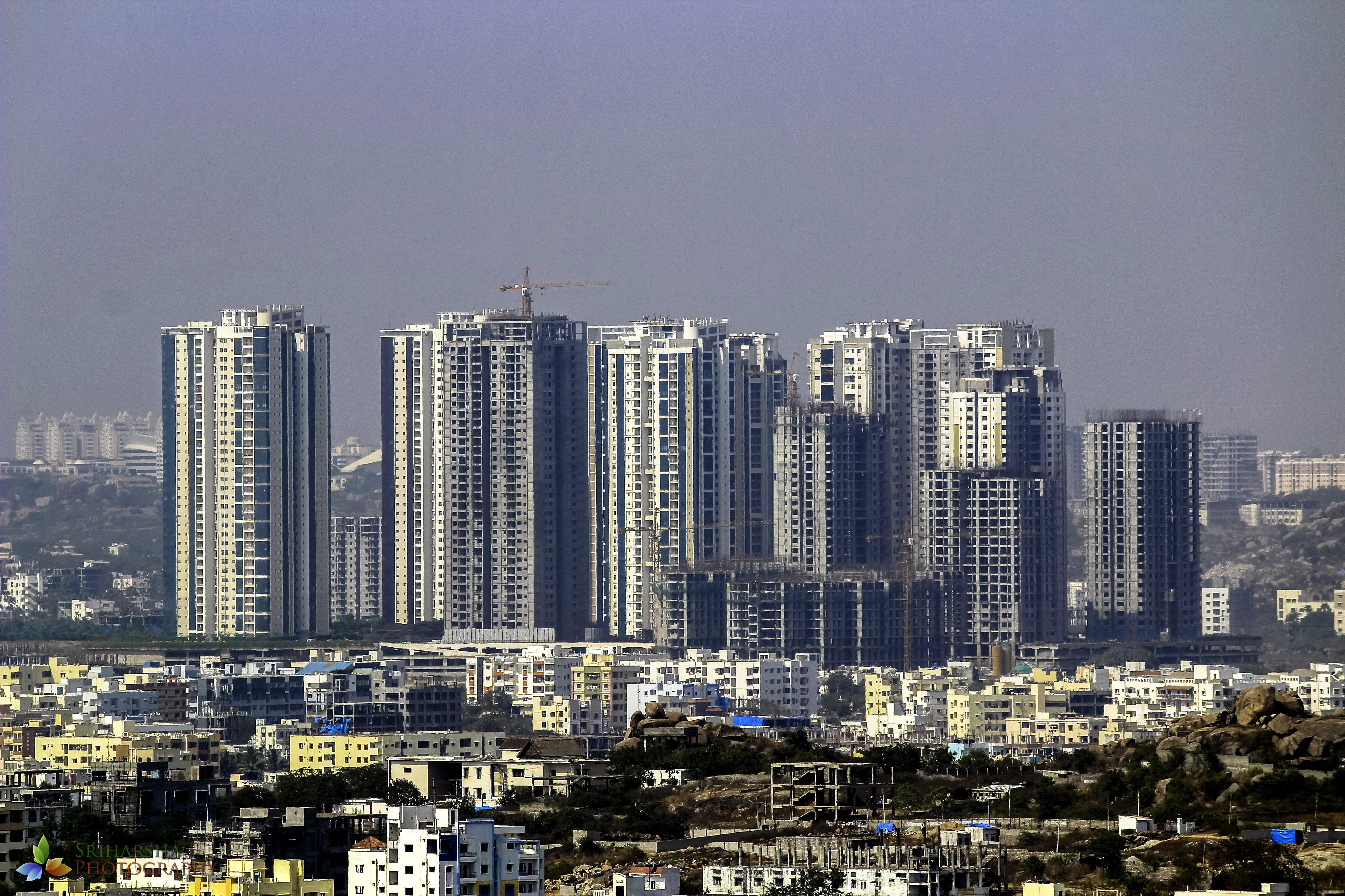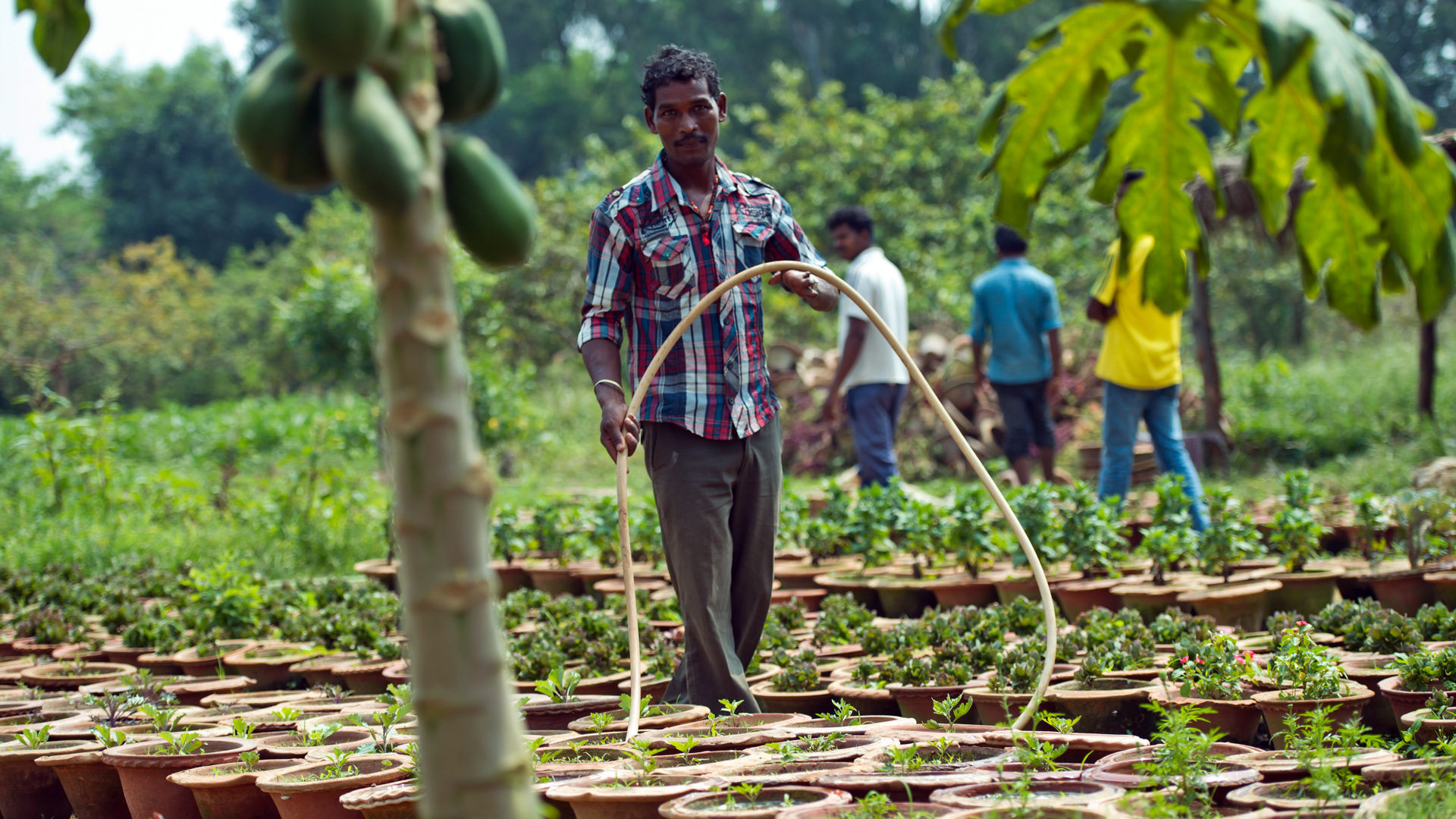Skyline of Hyderabad, India
Copyright© Sriharsha, via flickr, CC BY-SA 2.0
Economic situation Great potential – but a lack of jobs and training places
There is a considerable imbalance in India’s economy: the size of some economic sectors measured by their share of gross domestic product is not reflected in the number of jobs in those sectors. More than 40 per cent of the working population is employed in the agricultural sector. However, that sector’s share of GDP has shrunk over the years to a mere 16 per cent. Growth and prosperity are being generated primarily by the services sector, which accounts for around 50 per cent of GDP. However, the services sector only accounts for about one third of jobs. A very large share of the Indian workforce – 90 per cent in total – is employed in the informal sector.
In order to overcome poverty, the country needs a great many new jobs that come with social protection – especially for unskilled and low-skilled workers. There also needs to be a far greater range of better-quality training places on offer. So far only a small proportion of the population has completed formal vocational training. Companies complain that many graduates of universities and vocational training schools are underqualified.
Agriculture: agroecology for more sustainability and climate resilience
Indian agriculture is largely geared towards self-sufficiency. Because of population growth and soil degradation, in many regions the size of farms is constantly shrinking and more and more people no longer have land of their own. To buy fertiliser and seeds and pay for irrigation water, many small farmers have to take out loans, which is driving them into overindebtedness.
In order to feed its growing population, India pursued an approach known as the “green revolution” for many years, which was based on intensive farming and a small range of staple foods. While this made it possible to make important progress on food security, this policy also contributed significantly to soil degradation, water shortages and water pollution, high levels of pesticides in food, loss of biodiversity, and social inequality.
The crisis in agriculture is being exacerbated by climate change. Extreme weather is making agricultural production less and less predictable and stable. In the medium term, this is posing a threat to the availability of staple foods in large parts of India.
In light of this situation, agroecology approaches are becoming increasingly important as a sustainable method of farming. A series of national and federal support programmes are in place that are designed to help soils recover, to improve productivity, product diversity and climate resilience, and to increase incomes for smallholder farms.
Instead of using mineral fertilisers and other external agricultural inputs (such as pesticides), the aim is for farmers to make more use of natural local resource cycles and climate-smart production methods. These include year-round cover cropping, diversified farming systems such as agroforestry and the production of natural fertilisers from organic waste. This helps to restore soil fertility and increases water retention and carbon storage – all of which are key to global climate protection and biodiversity. Another approach is the promotion of millet farming as a resilient alternative to wheat and rice, both in India and globally.
As at: 03/09/2024

